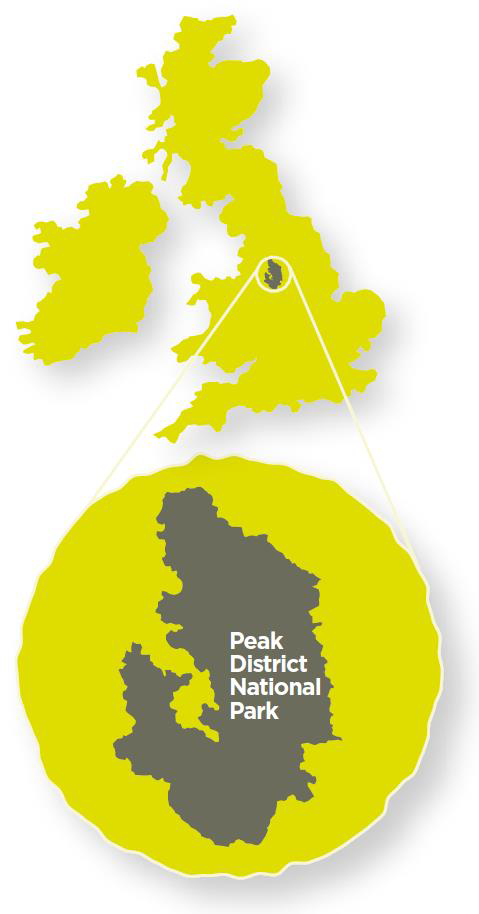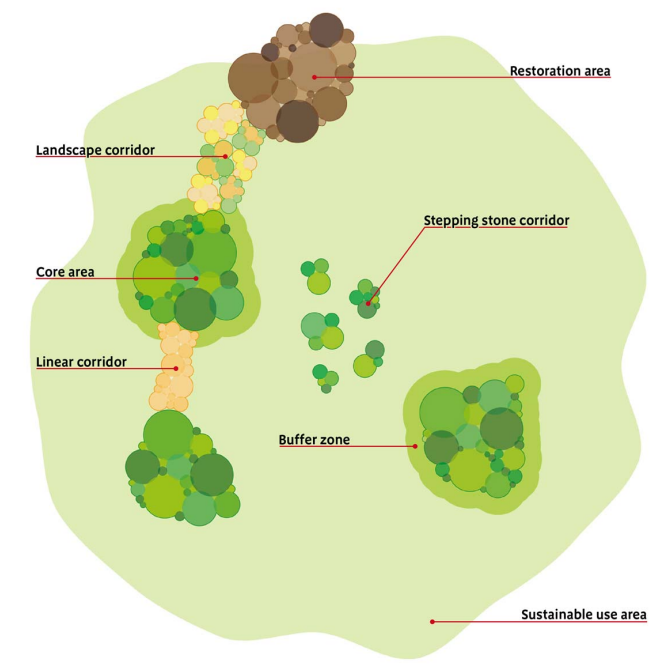The Peak District
The wildlife of the Peak District is influenced by past and current land management, and reflects our unique geography. Though there are special habitats and species, including some considered to be of international importance, our natural environment (opens new window) is not in a healthy state (opens new window).
# One plan for the place
This plan provides one Nature Recovery Plan for the Peak District that sits as part of the National Park Management Plan (opens new window), bringing together international, national and local legislation, policies and strategies.
This plan aims to contribute to the goals and targets set out in the Environmental Improvement Plan 2023 (opens new window). Actions taken to deliver the aims of this plan should contribute to the national Nature Recovery Network (opens new window).
The plan is made up of ten themes, with a series of aims for each. The aims of this plan will seek to deliver other public goods and ecosystem services, alongside biodiversity and nature recovery.

***An interactive map will be available here***
# Peak District policy
The National Park Management Plan 2023-2028 (opens new window) sets out the vision for the Peak District in 20 years’ time:
By 2043, the Peak District National Park is exemplary in its response to climate change and nature recovery
# Landscape Strategy
The Peak District consists of many individual landscapes, each valued for their special characteristics. The Landscape Strategy (opens new window) maps and describes eight Landscape Character Areas representing broad areas of landscape that share a common identity, for example the ‘White Peak’.
Within each Area, a number of Landscape Character Types have been defined, based on the pattern of natural and cultural characteristics, such as ‘open moors’.
Some landscapes will look different if we are to facilitate nature recovery. The Landscape Strategy helps guide how this could be achieved whilst remaining sensitive to our iconic landscapes, by setting out a landscape vision and management objectives for each Landscape Character Type.
The Wooded Landscapes Plan (opens new window) is part of the Landscape Strategy, and provides strategic direction for increasing tree and scrub cover, and their management, up to 2032.
# Local Plan
The Local Plan (opens new window) sets out the planning policies for the Peak District National Park, to which all developments must comply. It is used to make decisions about hundreds of planning applications received each year.
The Local Plan is under review, to check whether policies are still fit for purpose, given new pressures and challenges. The current Local Plan policies remain in place until the new Plan is adopted, likely in 2026.
The review gives the opportunity to further integrate wildlife conservation and enhancement into planning policy, and ensure developments are contributing as much as possible to nature recovery.
# Guiding principles
The themes and aims of this Plan have been developed to try and address challenges identified by those that are or could be delivering nature recovery. We need to identify and maintain what we have that is already working for nature, celebrate what has been achieved and learn lessons for the future, whilst understanding that a step change in action is needed to recover nature at scale.
# Lawton principles
In 2010, Professor Sir John Lawton led an independent review of England’s wildlife sites (commonly referred to as the Lawton report). 'Making Space for Nature: a review of England’s wildlife sites' (opens new window) proved to be ground-breaking, and established the basic principles for nature recovery into the future. The Lawton principles are summarised as:
better, bigger, joined and more
- Improve the quality of current sites by better habitat management
- Increase the size of current wildlife sites
- Enhance connections between, or join up, sites, either through physical corridors, or ‘stepping stones’
- Create new sites
- Reduce the pressures on wildlife by improving the wider environment, including through buffering wildlife sites.
The Lawton principles are the foundation of this Nature Recovery Plan: in forming aims, identifying opportunities and initiating action.

© Copied from ‘Making Space for Nature’
Because so few sites for many remaining habitats are large enough to be self-sustaining, the Lawton report suggests National Parks could have a key role to play in enhancing the resilience of the nature network as there is considerable potential to provide large areas of high quality wildlife habitat. The report clearly states:
We believe that National Parks ... should become exemplars of coherent and resilient ecological networks.
# 30 by 30 and Protected Landscapes Targets
In 2020, the government committed to protecting 30% of the UK’s land by 2030 (30 by 30), and in December 2022 this target was adopted at the UN Biodiversity Summit COP15, as part of an ambitious Global Biodiversity Framework (opens new window).
National Parks have been mapped in their entirety as ‘potential 30 by 30 areas’ by the Department for Environment Food & Rural Affairs (Defra). Their document Delivering 30by30 on land in England (opens new window) sets out how 30 by 30 is expected to be delivered, and set out a clear role for National Parks:
“Our Protected Landscapes will be at the heart of 30by30…”
(Protected Landscapes include National Parks and National Landscapes)
This has led to the government's Protected Landscapes Targets and Outcomes Framework (opens new window), which sets out how National Parks and National Landscapes can be “…alive with biodiversity…”. Although targets for Protected Landscapes are non-statutory, they help create a shared goal to recover nature at scale, and should be seen as a minimum contribution rather than a limit on ambition.
Targets related to nature recovery are:
Target one: Restore or create more than 250,000 hectares of a range of wildlife-rich habitats, outside protected sites by 2042
Target two: Bring 80% of Sites of Special Scientific Interest into favourable condition by 2042.
Target three: For 60% of Sites of Special Scientific Interest assessed as having ‘actions on track’ to achieve favourable condition by 31 January 2028.
Target four: Continuing favourable management of all existing priority habitat already in favourable condition outside of Sites of Special Scientific Interest and increasing to include all newly restored or created habitat through agri-environment schemes by 2042.
Target five: Ensuring at least 65% to 80% of land managers adopt nature friendly farming on at least 10% to 15% of their land by 2030.
Targets related to climate change and nature recovery:
Target seven: Restore approximately 130,000 hectares of peat by 2050.
Target eight: Increase tree canopy and woodland cover (combined) by 3% of total land area in Protected Landscapes by 2050.
In combination, the Lawton report, 30 by 30 target and Protected Landscapes targets give a clear mandate that the Peak District National Park is central to a thriving nature recovery network, not only rich in nature but delivering benefits for all.
← Context